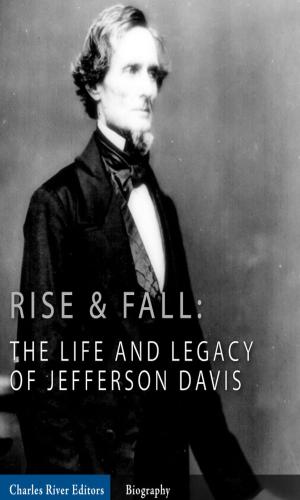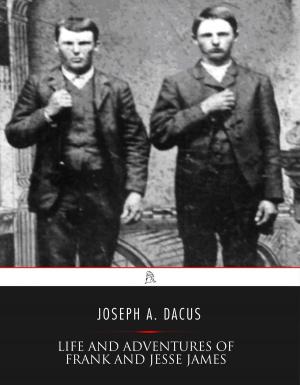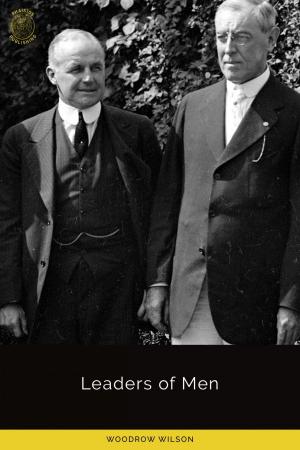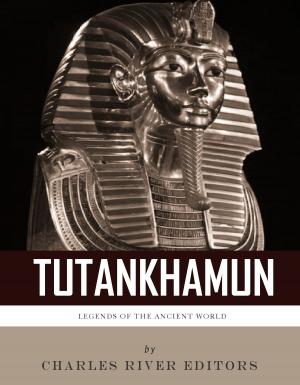Official Records of the Union and Confederate Armies: George Custers Account of the Battle of Gettysburg
Nonfiction, History, Americas, United States, Civil War Period (1850-1877), 19th Century, Military| Author: | George Custer | ISBN: | 9781619825802 |
| Publisher: | Charles River Editors | Publication: | February 15, 2012 |
| Imprint: | Language: | English |
| Author: | George Custer |
| ISBN: | 9781619825802 |
| Publisher: | Charles River Editors |
| Publication: | February 15, 2012 |
| Imprint: | |
| Language: | English |
George Armstrong Custer (December 5, 1839 June 25, 1876) is remembered for all the wrong reasons today, primarily for being in command at the Battle of the Little Bighorn, where nearly his entire command was annihilated during the Indian Wars. Until that fateful day, however, Custer was a renowned and respected military hero in the United States, most notably for his Civil War service. Raised in Michigan and Ohio, Custer was admitted to West Point in 1858, where he graduated last in his class. However, with the outbreak of the Civil War, all potential officers were needed, and Custer was called to serve with the Union Army. Custer developed a strong reputation during the Civil War, fighting in the First Battle of Bull Run. His association with several important officers helped his career, as did his success as a highly effective Cavalry commander. Before war's end, Custer was promoted to the temporary rank (brevet) of major general, and his cavalry played an important role in the Appomattox Campaign. Custer was on hand at General Robert E. Lee's surrender. Nearly 2 years earlier, Custer found his brigade heavily engaged on Day 3 of the Battle at Gettysburg in East Cavalry Field. The vaunted J.E.B. Stuart attempted to drive his cavalry into the Army of the Potomacs supply lines in its rear while the Army of Northern Virginia prepared for Picketts Charge. At East Cavalry Field, however, the Union cavalry fought the Confederate cavalry to a standstill, with Custers brigade bearing the brunt of the casualties. Custer wrote an account of the Battle of Gettysburg, focusing of course on Day 3, and it was preserved in The War of the Rebellion: Official Records of the Union and Confederate Armies, reflect this. This edition of his account includes pictures of the important commanders of the battle.
George Armstrong Custer (December 5, 1839 June 25, 1876) is remembered for all the wrong reasons today, primarily for being in command at the Battle of the Little Bighorn, where nearly his entire command was annihilated during the Indian Wars. Until that fateful day, however, Custer was a renowned and respected military hero in the United States, most notably for his Civil War service. Raised in Michigan and Ohio, Custer was admitted to West Point in 1858, where he graduated last in his class. However, with the outbreak of the Civil War, all potential officers were needed, and Custer was called to serve with the Union Army. Custer developed a strong reputation during the Civil War, fighting in the First Battle of Bull Run. His association with several important officers helped his career, as did his success as a highly effective Cavalry commander. Before war's end, Custer was promoted to the temporary rank (brevet) of major general, and his cavalry played an important role in the Appomattox Campaign. Custer was on hand at General Robert E. Lee's surrender. Nearly 2 years earlier, Custer found his brigade heavily engaged on Day 3 of the Battle at Gettysburg in East Cavalry Field. The vaunted J.E.B. Stuart attempted to drive his cavalry into the Army of the Potomacs supply lines in its rear while the Army of Northern Virginia prepared for Picketts Charge. At East Cavalry Field, however, the Union cavalry fought the Confederate cavalry to a standstill, with Custers brigade bearing the brunt of the casualties. Custer wrote an account of the Battle of Gettysburg, focusing of course on Day 3, and it was preserved in The War of the Rebellion: Official Records of the Union and Confederate Armies, reflect this. This edition of his account includes pictures of the important commanders of the battle.















